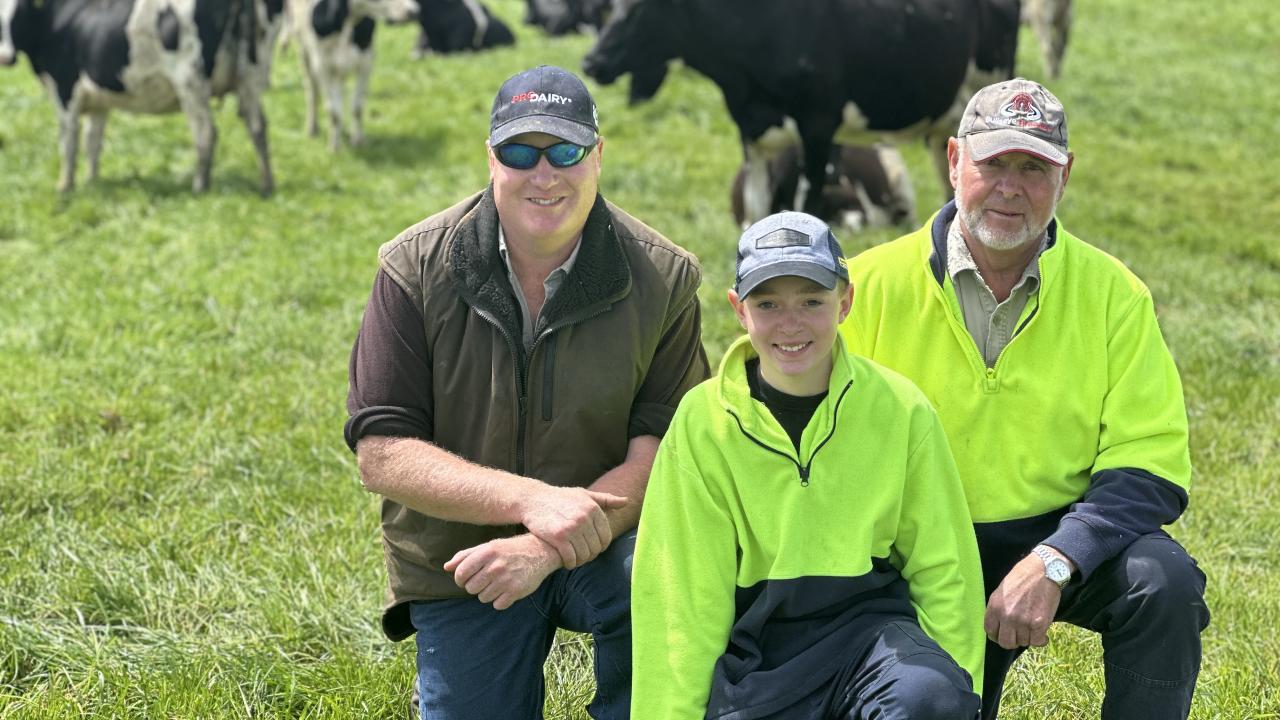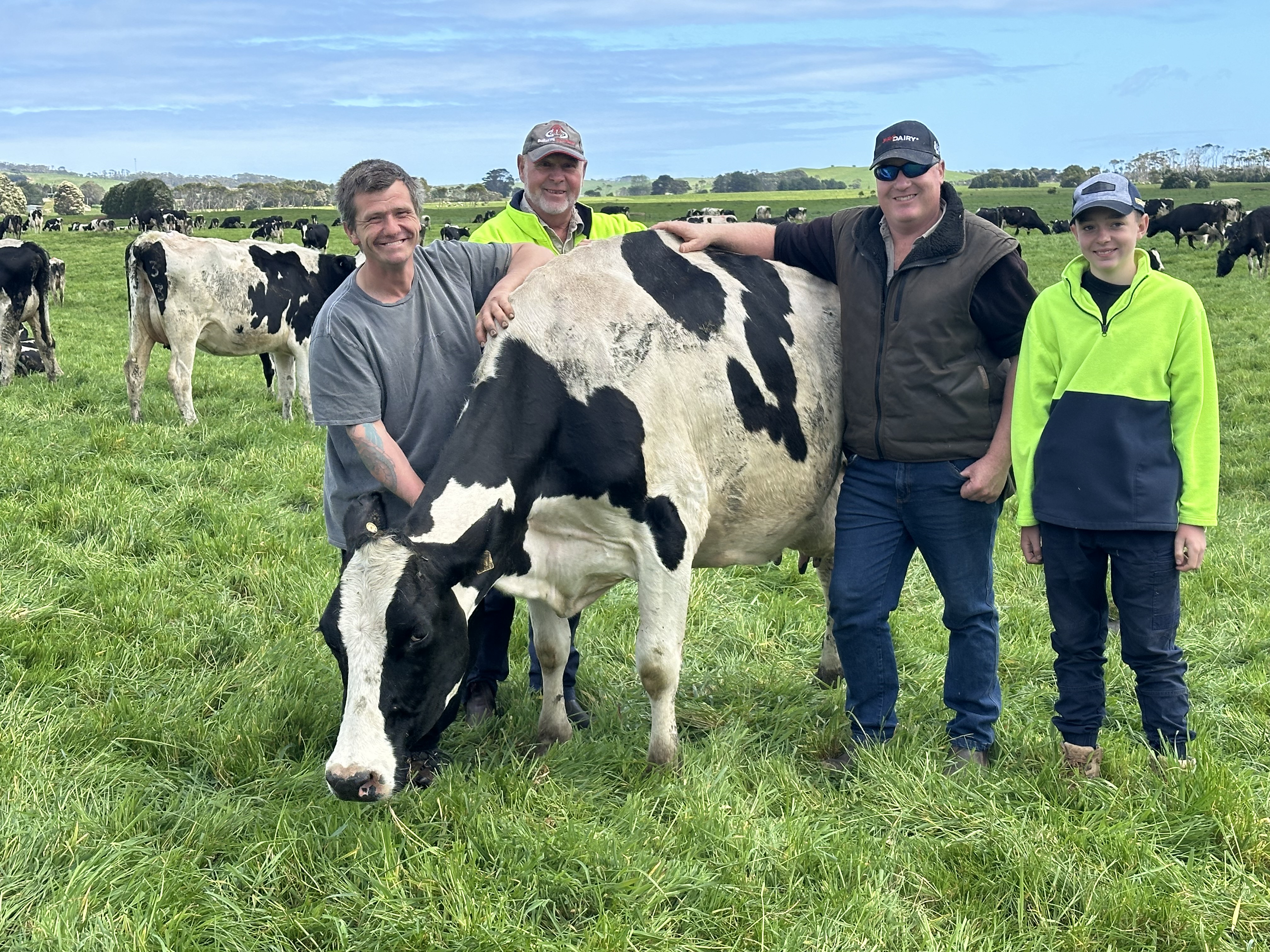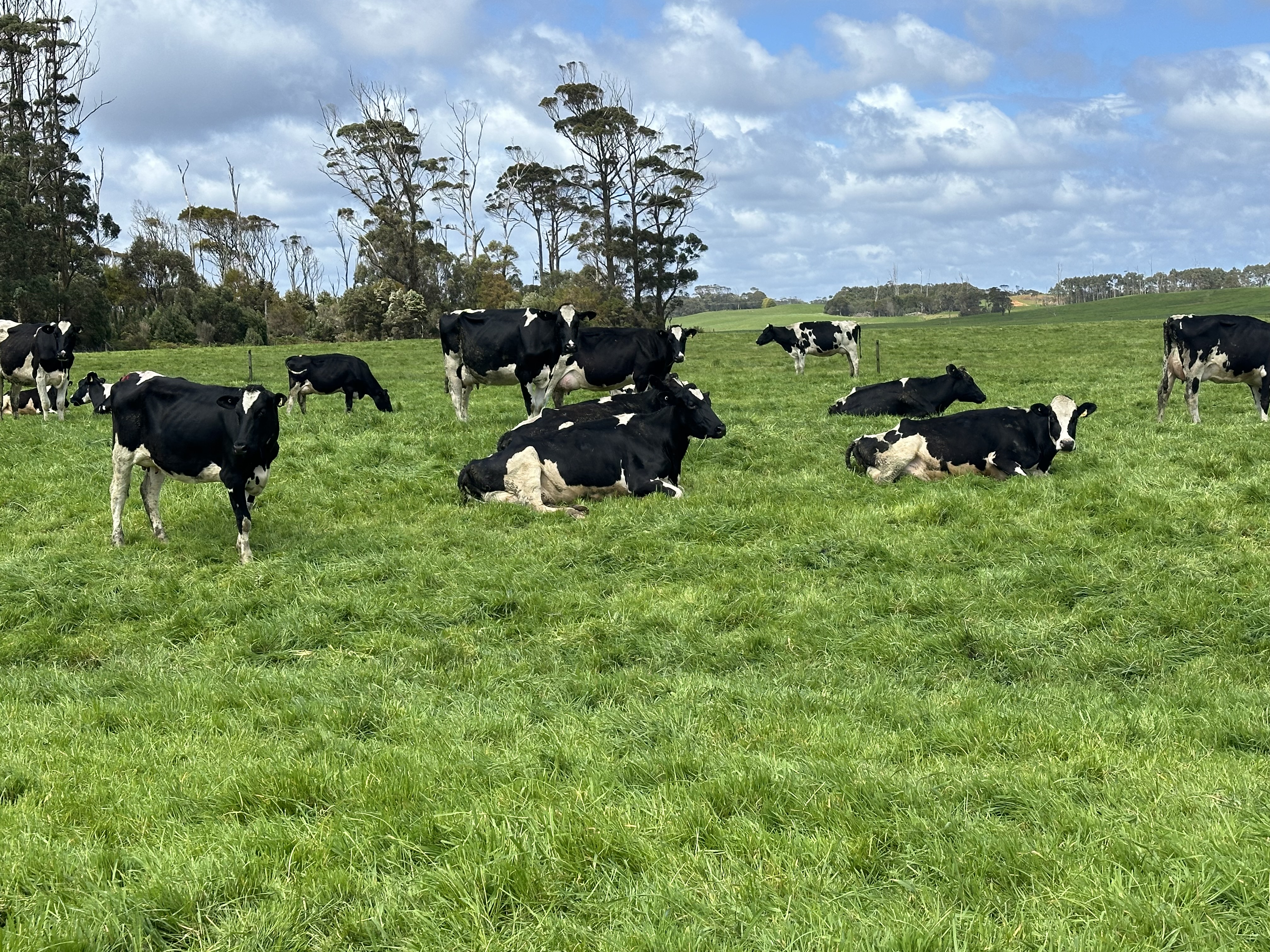Greys go for gold

Getting all the little things right has helped one northwest Tasmanian farm produce Tasmania’s highest quality milk.
The Grey family have been dairy farming in Tasmania’s north west for three generations and they recently won a Dairy Australia gold milk quality award, where they were named in the top 100 farms in the country.
Their operation was ranked number one in the state, for the lowest bulk cell count in their milk.
Bruce Grey started started farming at Marrawah on a property developed by his father.
His son Anthony also became involved with the farm where they milked about 80 cows.
The family then went on to buy their main property, a 130ha farm near Redpa farm in 1999.
“It was a rundown beef farm, so we developed it as we went so we refenced it, rewatered it and put all the hump and hollow drainage in,” Anthony said.
“We were still running beef, but we set it up as a dairy farm so we could build a cow shed down the track and it would be ready to go.”

They built the dairy in 2004 and moved their cows from the Marrawah property and transitioned to dairying.
They gradually increased their herd numbers and now milk a herd of 350 pure bred Friesians.
“We like the black and whites and we’ve used AI for a lot of years now,” Anthony said.
“We’ve been trying to build them up and get them better and better.”
They have also used genomic testing on their calves for the last few years.
The testing gives them information on the health traits, feed conversion and production so they can make decisions about which heifer to keep for replacements.
The farm has about 40ha of irrigation, which Anthony said is used for pasture production over the summer months.
“It gives us a 24 or 25 days round so they get a good feed of green grass at night,” he said.
“We’ve got a lot of flats too and they hold on pretty well, so they get a green pick them we can top them up with silage and pellets if needed.
They cut some silage on the home farm and also on a runoff block just up the road which is also used to run their calves.
Anthony said this season’s drier than average start had been a benefit in their area during the winer when it can get very wet.
The family supply milk to Cadburys and pride themselves on maintaining excellent cow health and producing top quality milk.
Anthony said they used to sell a number of heifers into the Chinese export market each year.
Since the export demand has reduced, they are now focusing on breeding replacements, using sexed semen with their better heifers which have been genomics tested.
They use a fixed time artificial insemination system. which has tightened up their calving pattern significantly.
“You wonder why you do it sometimes when they’re all calving in a rush, but it’s good because all your calves are the same age,” he said.
“It’s a big rush for ten days or so, but then you get the bulk of them in early at the start of caving and it gives the cows more time to start cycling and get back in calf again early.”

One of the things the family has implemented, which they say has helped to reduce their cell count, is a calving pad.
“It’s one thing that I thought of that since we’ve done that it has been a bit of a turning point,” Anthony said.
“We used to calve them out in the paddock and as you can imagine in winter time there’s a lot of mud everywhere. We built a calving pad which isn’t elaborate, but it’s a nice area with a fence right around it and a wind break so they can get out of the weather and lights we can flick on at night time.”
Anthony said making sure the cows are dried off well also sets them up for the next season and helps prevent mastitis.
“We antibiotic dry cow everything when we dry them off and we dry them off in good condition and teat seal everything,” he said.
“We teat seal the heifers as well and since we started doing all that we noticed a big drop in cell count.”
Anthony said once they are dried off, the cows are moved to a runoff block for the winter when they fed really well in preparation for the next season.
The cows which are due first are moved back to the calving pad about three weeks before they start calving.
Once there they are given access to ad lib hay and lead feed and are monitored carefully.
They have also built a smaller separate calving pad for the heifers which they said works well.
Anthony said the calving pad also makes it easier to manage the calves.
“Before we were picking up calves out in the wet and mud and it knocks them around especially when we get that horrible south westerly wind,” he said.
Anthony said they made the calving pad changes to help reduce cell counts but also make things easier for the cows and themselves.
“I don’t think there’s any one silver bullet with the cell counts, it was lots of little things,” he said.
Anthony said they work closely with their local vet and their employee Colin Dukes is also very good at picking up cases of mastitis early so they can be treated.
“We still get mastitis and probably as much as everyone else, but Colin is very good at finding it early, and he’s very vigilant,” he said.
“We find them quickly and treat them. We give them one chance and treat them and if they’re a decent cow we might give them another chance but after that they have to go down the road We don’t hang on to any cows who are repeat offenders.”
Anthony said consistency was probably the biggest factor in getting their cells counts down.
“Were not doing anything too different to what everyone else is doing,” he said.
“Our cows are fairly happy and well fed, we’re not into measuring grass and chewing down every last mouthful so they get looked after pretty well. Having good staff who take pride in the milk as well is important.”

Add new comment